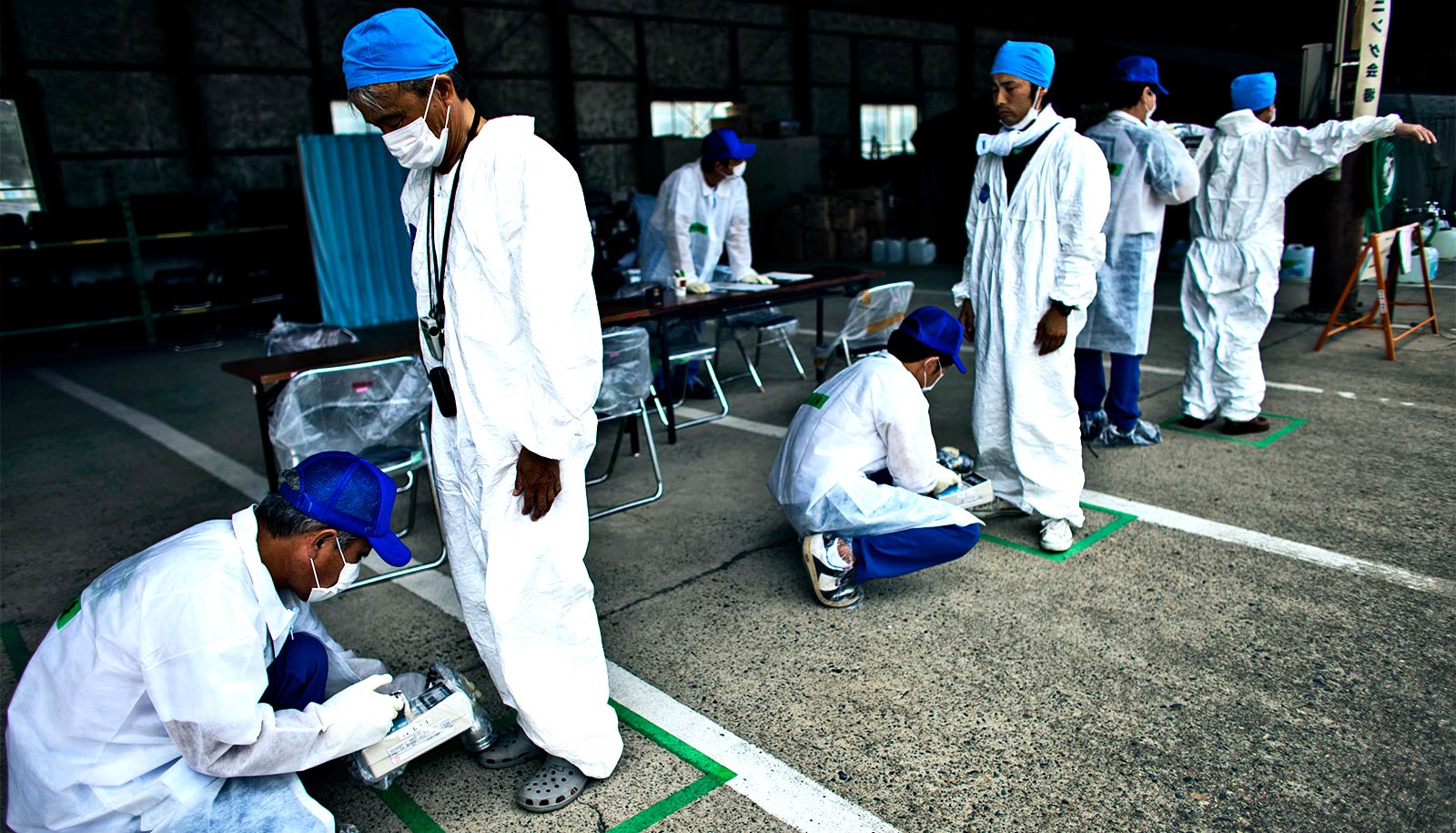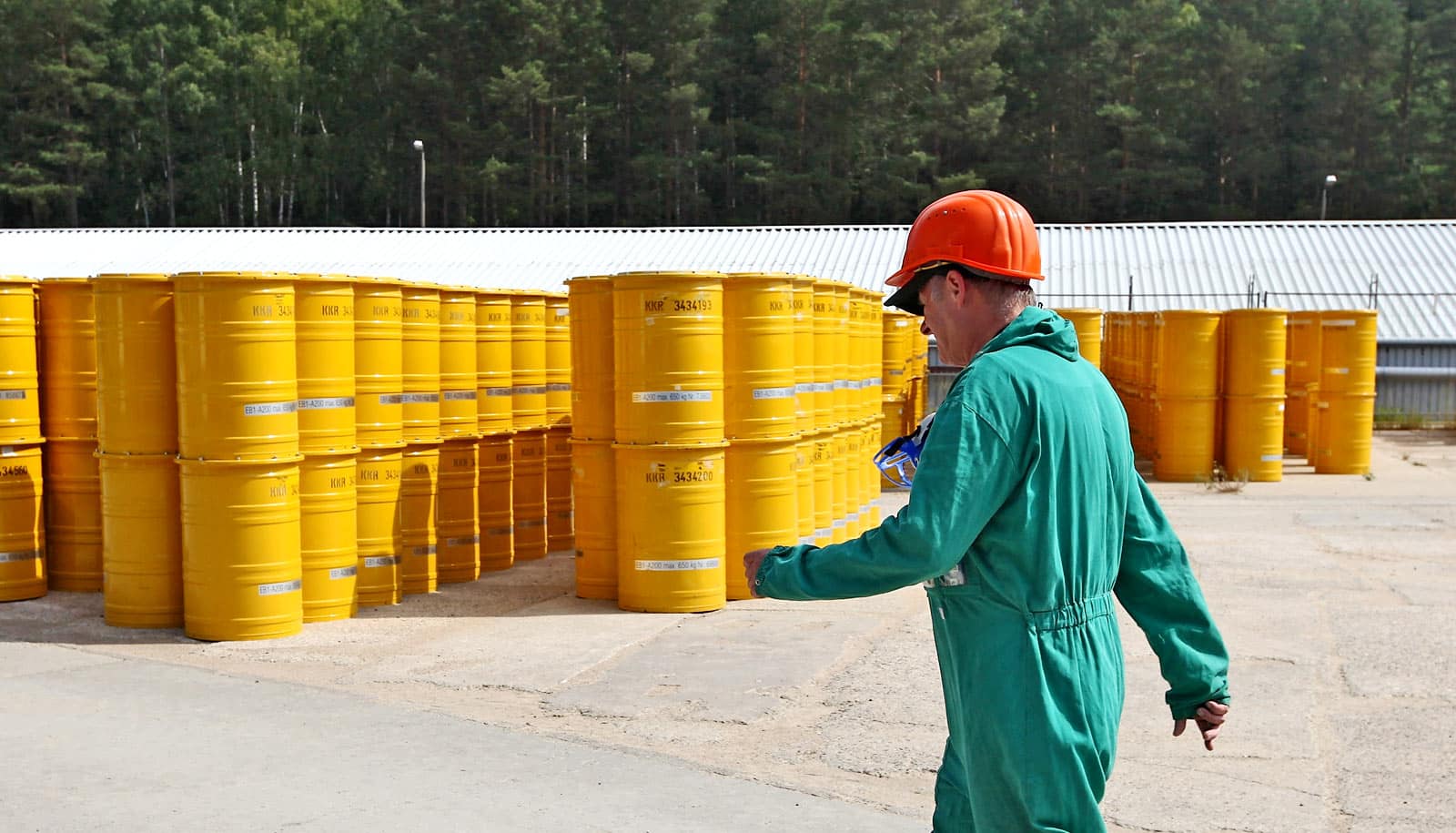Microscopic particles emitted during the Fukushima nuclear disaster contained plutonium, according to a new study.
The microscopic radioactive particles formed inside the Fukushima reactors when the melting nuclear fuel interacted with the reactor’s structural concrete.
Nearly ten years after meltdown at the Fukushima Daiichi Nuclear Power Plant caused a nuclear disaster, the new information about the extent and severity of the meltdown and the distribution patterns of the plutonium have broad implications for understanding the mobility of plutonium during a nuclear accident.
“The study used an extraordinary array of analytical techniques in order to complete the description of the particles at the atomic-scale,” says coauthor Rod Ewing, co-director of the Center for International Security and Cooperation (CISAC) at Stanford University.
The researchers found that, due to loss of containment in the reactors, the particles were released into the atmosphere and many were then deposited many miles from the reactor sites.
Studies have shown that the cesium-rich microparticles, or CsMPs, are highly radioactive and primarily composed of glass (with silica from concrete) and radio-cesium (a volatile fission product formed in the reactors). But the environmental impact and their distribution is still an active subject of research and debate. The new work offers a much-needed insight into the Fukushima Daiichi Nuclear Power Plant (FDNPP) meltdowns.
The study used an extraordinary array of analytical techniques in order to complete the description of the particles at the atomic-scale.
The researchers used a combination of advanced analytical techniques, including synchrotron-based micro-X-ray analysis, secondary ion mass spectrometry, and high-resolution transmission electron microscopy, to find and characterize the plutonium that was present in the CsMP samples. They initially discovered incredibly small uranium-dioxide inclusions, of less than 10 nanometers in diameter, inside the CsMPs; this indicated possible inclusion of nuclear fuel inside the particles.
Detailed analysis revealed, for the first-time, that plutonium-oxide concentrates were associated with the uranium, and that the isotopic composition of the uranium and plutonium matched that calculated for the FDNPP irradiated fuel inventory.
“These results strongly suggest that the nano-scale heterogeneity that is common in normal nuclear fuels is still present in the fuel debris that remains inside the site’s damaged reactors,” says geochemist Satoshi Utsunomiya of Kyushu University, who led the team.
“This is important information as it tells us about the extent [and] severity of the meltdown. Further, this is important information for the eventual decommissioning of the damaged reactors and the long-term management of their wastes.”
With regards to environmental impact, Utsunomiya says, “as we already know that the CsMPs were distributed over a wide region in Japan, small amounts of plutonium were likely dispersed in the same way.”
This is important information for the eventual decommissioning of the damaged reactors and the long-term management of their wastes.
The team “will continue to experiment with the CsMPs, in an effort to better understand their long-term behavior and environmental impact,” says Gareth T. W. Law, a coauthor on the paper from the University of Helsinki. It is now clear that CsMPs are an important vector of radioactive contamination from nuclear accidents.”
“While the plutonium released from the damaged reactors is low compared to that of cesium; the investigation provides crucial information for studying the associated health impact,” says coauthor Bernd Grambow of Nantes/France.
Utsunomiya emphasizes that this is a great achievement of international collaboration. “It’s been almost ten years since the nuclear disaster at Fukushima,” he says, “but research on Fukushima’s environmental impact and its decommissioning are a long way from being over.”
The paper appears in Science of the Total Environment.
Additional researchers from Kyushu University, University of Tsukuba, Tokyo Institute of Technology, National Institute of Polar Research, University of Helsinki, Paul Scherrer Institute, Diamond Light Source, and SUBATECH (IMT Atlantique, CNRS, University of Nantes) contributed to the work.
Source: Stanford University via Kyushu University

